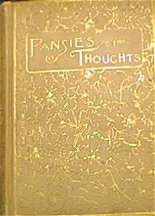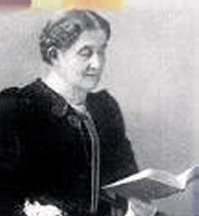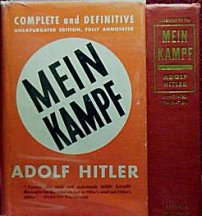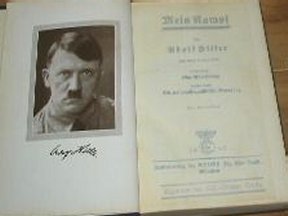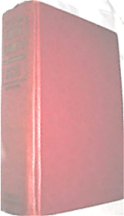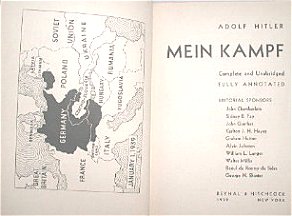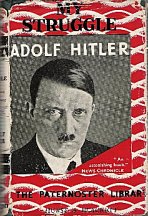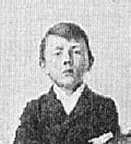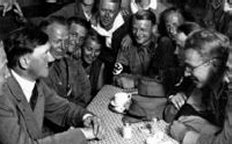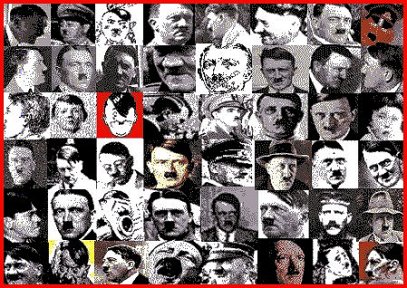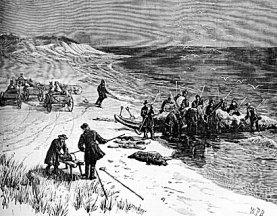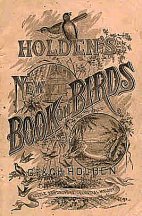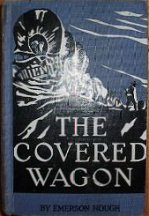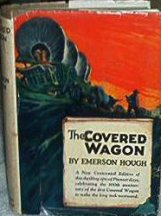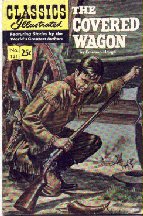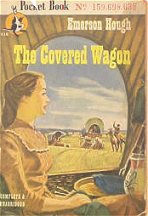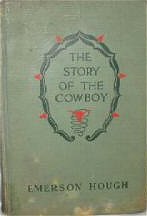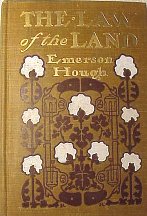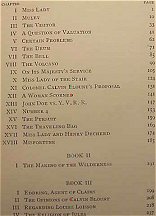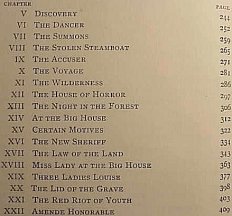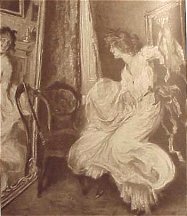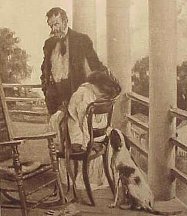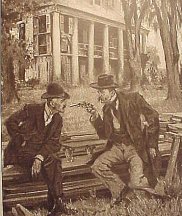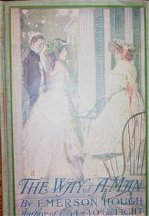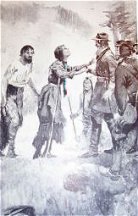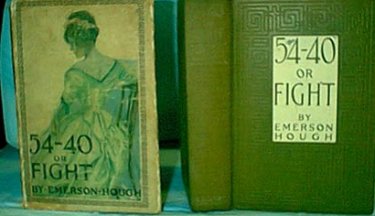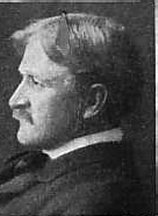 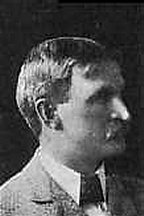
HOUGH, EMERSON, 1857-1923
Journalist, editor of Forest and Stream, and novelist of the West.
Emerson Hough's American
West by Carole M. Johnson: From Books at Iowa 21 (November 1974) Copyright:
The University of Iowa
http://www.lib.uiowa.edu/spec-coll/Bai/johnson.htm
As a working journalist,
Hough traveled over the American West in the closing decades of the nineteenth
century when the West was being ransformed from a wilderness into a civilized
region. He participated in that change inasmuch as his writing contributed
to the integration of the West into the national identity. Like his friend
Theodore Roosevelt, Hough developed into an historian of the westward expansion
and an ardent patriot who saw in the western experience the traditional
American ideals of individuality, courage, strength, and pragmatic integrity
he felt were necessary for the survival of modern America. As a writer
of western history and fiction, Hougli sought to establish the West as
a subject with enough dignity and interest to transcend the popular image
of the Wild West cultivated by writers ignorant of the true West or its
past. As a conservationist and an authoritative commentator on every sport
from fly casting to bear hunting, he sought to preserve the American wilderness
because he saw it as a source of the nation's strength and uniqueness.
His most popular novels,
The Covered Wagon (1922) and North
of 36 (1923), were the culmination of his efforts to identify the West
with the ideals of the American past.
Though a midwesterner, Hough
was a product of the frontier tradition. He was born in Newton, Iowa, on
June 28, 1857. His parents, Joseph Bond Hough and Elizabeth Hough, had
emigrated from Virginia to Jasper County, Iowa, in 1852.John, the first
Hough to reach the American colonies, had emigrated from Chester, England,
in 1683, and his descendants subsequently moved from Pennsylvania to Loudoun
County, Virginia. Emerson Hough was always proud of his southern, Anglo-Saxon
ancestry because it testified to his "ancient, undeniable one hundred percent
Americanism." Joseph Hough taught school, served as a county clerk, worked
as a county surveyor and a farmer, and at one time was a grain and lumber
merchant. Emerson Hough himself displayed the same kind of frontier versatility
in his lifetime. In fact, his father was the prototype for many of his
fictional heroes and a pattern for his own life. "My father was a Virginian,"
Hough said once, "a grand man as I look at it, simple, temperate, manly,
the best shot with rifle or gun that I ever saw. I suppose I got my love
of field sports and my love of the Old West from him -- that it was heredity
that sent me west and shaped much of my later course of life." Hough was
a proficient sportsman himself, hunting and fishing in every state of the
Union and in Canada and Mexico before he died. He maintained a husky appearance
and led a strenuous life in spite of constant illnesses which plagued him
from childhood. Fortunately, this enforced idleness as a child allowed
him to read a great deal. He indulged his preference for romanticism in
Tennyson's Idylls of the King; and the battle scenes in the Biblical Book
of Kings provided a natural transition to Ivanhoe and most of Walter Scott's
historical fiction. Perhaps the book which influenced Hough most was Henry
Howe's Historical Collections of the Great West, published in Cincinnati
in 1851. "I still think this is one of the great books of America," he
said, for it showed us America as it once was -- the most wonderful country
ever occupied by civilization. I wish those old days were back, or that
I had been born in them." As a youth, Hough was deeply impressed
by Howe's declaration in the preface of his book that historical fiction
had greater charm than plain history.
Hough graduated with two
other pupils from the local high school at Newton, Iowa, in 1875, and after
teaching in a country school for one term, he entered The University of
Iowa in 1876. His university career was an eventful one in which he played
on the football team, edited the college newspaper, and graduated
Phi Beta Kappa in 1880. Hough's father urged his son to study law, partly
out of his own failure in that ambition for himself; but reluctant to enter
the legal profession, Hough spent some time as a surveyor in a civil engineering
party before deciding to read law. As a diversion from his studies he began
to write sketches on the outdoors and on hunting for publication in eastern
magazines. His first published article, "Far From the Madding Crowd," which
appeared in Forest and Stream (August 17, 1882), revealed a romantic primitivism
which was to pervade his later work: "There is no more natural or effective
way to rest," he wrote, "than to merge for a time the artificial man into
the natural; to sink civilized training in the instincts given us by our
fathers, the savages . . ."
Hough was admitted to the
bar in 1882 at Newton, Iowa. Shortly thereafter, an unhappy love affair
precipitated a desire to travel west. Fortunately a friend who was practicing
law in White Oaks, New Mexico, invited him to join his law firm there,
and when the American Field offered him a free railroad pass to write some
sketches on the Southwest for them, Hough left immediately for New Mexico.
The New Mexico Territory
in the 1880's was a place of social and political upheaval, the scene of
murders, range wars, Indian uprisings, and the coming of the railroad-the
last frontier. Hough arrived in White Oaks on June 1, 1883, and formed
a law partnership with Eli H. Chandler. At this time White Oaks -- "half
mining camp and half cow camp" -- was considerably tamer than its neighbors,
Lincoln and Fort Stanton, which were just recovering from the ravages of
the Lincoln County War and the tempestuous career of the late outlaw, Billy
the Kid. But, despite the inevitably numerous legal proceedings typical
of a mining community, Hough and his partner did not have much of a law
practices Increasingly, Hough was more attracted to the pleasures of the
hunt than to the drudgeries of the law, and he later admitted that he devoted
a great deal of time to bear hunting. Recognizing that a man had to be
versatile in order to survive, Hough spent the remainder of his time working
as a reporter and sometime editor on the Golden Era, a weekly White Oaks
newspaper. Eventually, journalism began to occupy as much of his time as
hunting.
During his stay in New Mexico,
Hough bad been gathering material for the American Field and other Midwestern
publications like Field and Stream and Outing. In a series of sketches
which appeared in the American Field from June 2, 1883, to May 31, 1884,
he wrote about his travels in the Southwest. These sketches reveal a perceptive
response to an environment that must have appeared strange if not extraordinary
to the young man from the Midwest. This response often takes a humorous
and, in some cases, comic form, foreshadowing some of his best work in
Heart's Desire. Other more serious sketches show a remarkable insight into
the powerful influence of the frontier environment upon its inhabitants,
at its worst twisting the soul with loneliness, at its best eliciting superior
qualities of courage, self-reliance, individuality, and pragmatic integrity
that were necessary for survival in the West. "The ancient law of individualism
and of the survival of those who ought to survive, was the actual law of
the land," Hough wrote of the West be had known in the 1880's, and he firmly
believed and advocated the idea that "environment produced the creature."
To a great extent Hough's life in White Oaks determined the kind of values
he admired, but his attachment to White Oaks was based on more than a youthful
romanticism. While he was frankly idealistic about the place, he also recognized
that White Oaks, as he had known it, had been real, and he was concerned
with capturing that reality before it vanished into unrecognizable myth:
"One saw there the actual old West, not the railroad tourist West, but
the real West, with its population made up of flotsam and jetsam of the
westbound tide of humanity." Consequently, in his best western fiction,
Hough based his stories on his own personal observations and experiences,
showing little tendency to romanticize or exaggerate his characters or
the West.
In February, 1884, Hough
returned to Iowa to attend his mother, who was ill. When he found his father
in serious financial difficulties, he abandoned the law altogether and
turned to journalism to support his family. From February to October of
1884, he worked as the business manager of the Des Moines Times,
and in late November of that year he became the associate editor of the
Register in Sandusky, Ohio. Hough also wrote humorous stories for the McClure-Phillips
syndicate at five dollars a column and articles on sports for the St. Louis
Globe-Democrat at six dollars a column. From Sandusky, Ohio, he went in
1889 to Chicago, where be worked on the American Field, the sporting publication
to which be had previously contributed. His assignments for this magazine
took him to Colorado, Wyoming, Nebraska, Kansas, New Mexico, the Indian
Nations, Texas, and other wild, remote parts of the country. He later recalled
that by age thirty-two he had been successively "a sewer of grain sacks,
a rodman, a levelman, a law student, a lawyer, an editor, a reporter, a
solicitor, a collector of bad debts, a special writer, a townsite boomer,
and a newspaper owner." Since 1882 he had contributed occasional
sketches on hunting and fishing to Forest and Stream, a New York sporting
journal, and in 1889 he became its western representative. His responsibility
was to edit the "Chicago and the West" column for fifteen dollars a week.
His job also required him to solicit advertising, an activity he disliked
intensely. Nevertheless he resolved to become "the best posted man in America
engaged in the journalism of outdoor sports." Of the years between
1889 and 1904 he later wrote: "I never worked harder in my life than I
did at this time, and I don't know that I have ever been happier. In all
this time I was getting a sort of education which embraced pretty much
all of western America. I knew western standards and western life pretty
well."
One of Hough's trips during
this period had far-reaching effects. In the winter of 1893, in company
with his friend and guide Billy Hofer and two soldiers from Fort Yellowstone,
Hough crossed the whole of Yellowstone National Park in below-zero temperatures
for the purpose of photographing the wild game and counting the buffalo,
whose number was dwindling because of the encroachment of winter poachers.
Though the authorities thought there were five hundred buffalo left in
the park, Hough could hardly find one hundred. In the course of his trip
be was also instrumental in capturing a poacher. When the army fined the
poacher only by confiscating his outfit, Hough was outraged and wrote a
report showing the absurdity of the park regulations as practical protection
for the wildlife and emphasizing also the actual extent of the ravages
of the poachers on the park buffalo. This report, later published in an
eastern newspaper, moved Congress in May, 1894, to pass a strong law making
the poaching of wild game in the park a punishable offense, the first time
that government protection had ever been given to the buffalo. Hough said
of his part in this historic event: "I have always thought this was about
as useful a thing as I ever was able to do in the somewhat thankless attempt
to be of service to the wildlife of America."
By 1897 Hough had reached
middle age without notable professional success. Marriage to Charlotte
Cheesebro in that year brought stability into his life and gave a direction
to his career. In order to increase his income he began utilizing the accumulated
experience of years of travel and bservation-what he called his "vacation
work"- by writing about what he knew best. In 1896, through the influence
of George Bird Grinnell, owner of Forest and Stream, Hough was asked to
do a volume on the cowboy for the "History of the West" series, edited
by Ripley Hitchcock. The Story of the Cowboy (1897), a historical and factual
treatment of the cowboy and his life which is still considered a classic
document on the cattle industry, established Hough's reputation as a western
writer. Critical reception of the book was almost unanimously favorable
and even enthusiastic, and the praise of people like Hamlin Garland and
Theodore Roosevelt encouraged Hough tremendously. Garland wrote to Hough,
saying that "It is a splendid performance. It has the power of the larger
sort. It has dignity, restraint and structure. I wish I had written it
myself." Theodore Roosevelt's approval meant even more to Hough; he marked
this year as his true arrival as a western writer and Roosevelt's congratulatory
letter as a landmark and inspiration in his life:
Though The Story of the Cowboy
did not make much money, Hough was encouraged to complete his next book
(a novel this time) within a few months, working on it at night and pursuing
his journalistic activities during the day. When it was published in 1900,
The Girl at the Halfway House attracted little attention and made even
less money. Though not an artistically successful novel, The Girl dealtthoughtfully
and intelligently with the problems of the settlement of the West, focusing
specifically on the development of a Kansas cow town into a prosperous,
civilized city. In fact, this novel and the short stories Hough wrote during
this period show an artistic and intellectual growth, and their success
is based mainly on his objectivity and bonesty in dealing with western
themes.
Not until the publication
of The Covered Wagon in 1922 did Hough enjoy again the success of his first
bestseller, The Mississippi Bubble. Nevertheless in the intervening years
his writing afforded him a comfortable living. He enjoyed his career despite
the constant pressure to produce a steady stream of marketable material,
most of which he gathered on his summer trips. Hough responded to these
demands with incredible stamina and ingenuity, in some cases using the
same material in different ways. For example, a financially disastrous
investment in farming by irrigation in Texas became the basis for an amusing
and informative article, "Under the Ditch in Texas," which appeared in
Outing (February, 1909). In another instance, Hough satirized the land
frauds he had discovered taking place in the West through a series of Curly
stories which appeared from 1909-1913 in the Post, Collier's, and the Popular
Monthly. Unable to editorialize on these land abuses for fear of offending
the editors of the Post, who were closely allied with big business, Hough
wrote these stories out of a sense of indignation, and incidentally produced
some of his better fiction.
Hough's inability to make
money on his western fiction continued to discourage him considerably,
and after 1913 be produced a large number of articles, short stories, and
books on more topical, modern concerns. Most of his important work was
done in conservation. These articles were often reprinted by conservation
clubs and did much to promote the movement nationwide. Hough also wrote
"The Young Alaskans" series of books for young people, encouraging them
to enjoy outdoor life and preserve the natural environment. In fact, Hough
was so active in the conservation of the national parks that on different
occasions he was offered the position of superintendent of Yellowstone
Park and Grand Canyon Park. He turned down the offers because the salary
was too low, but he admitted privately that an official position, especially
a government post, would restrict his freedom. Nevertheless, he did
not lose his passion for western history, and in 1917 he eagerly accepted
an invitation to write a volume on western subjects for the "Chronicles
of America" series, a cooperative history in fifty volumes, edited by Allen
Johnson for the Yale University Press. The general editorial scheme was
to relate American history in terms of "a romantic adventure of epic proportions."
Hough's contribution, The Passing of the Frontier: A Chronicle of the Old
West (1918), fit this requirement exactly because it was a compilation
of his sketches and articles from previous years. He did not attempt to
discuss the influence of the frontier on American politics as be had done
in his earlier historical accounts. Instead, he included chapters on the
more striking phases of frontier life in the Far West in its mid-century
stage of existence. In an about-face from his previous views in The Story
of the Cowboy and The Story of the Outlaw, in which he had glorified the
individual hero, he reserved his highest praise in The Passing of the Frontier
for the settlers:
The chief figure of the American
West, figure of the ages, is not the longbaired, fringed-legging man riding
a raw-boned pony, but the gaunt and sad-faced woman, following her lord
where he might lead, her face bidden in the same ragged sunbonnet which
bad crossed the Appalachians and the Missouri long before. That was America,
my brethren! There was the seed of America's wealth. There was the great
romance of all America-the woman in the sunbonnet; and not, after all,
the hero with the rifle across his saddle horn.
The research be had done
for The Passing of the Frontier became the basis for a series of articles
on western themes that Hough wrote for the Post in 1919, "Traveling the
Old Trails." A few of the subjects Hough dealt with were the pioneer migration
of the 1840's, the early exploration of the Far West and the Northwest
by Lewis and Clark, and the cattle industry, the subjects of his earlier
and more successful work. These articles were marked by an extreme patriotism
and individualism, a personal reaction to what he considered the socialist
threat to the American political system. Indeed, this resurgence of interest
in the national heritage of older, simpler values was symptomatic of his
general bewilderment at the social upheavals, the complex international
politics, and the changing social mores of the postnvar period. In a series
of letters he wrote to his friend Frederick Bigelow, Hough expressed these
feelings. In 1921 he wrote: "I'm afraid I belong to an earlier age ...
when I see the jazz life of these hysterical tourists bent on pleasure
and burry, I like that not even so well. I reckon there is no place for
me." [29] In a letter which revealed the source of his nostalgia, Hough
wrote of his disgust with the current administration, the govemment, and
the country in general, and he added wistfully: "If I knew of any place
in the world like White Oaks, New Mexico, as it was in 1880 I should take
the next train thither." [30]
The Covered Wagon (1922)
was written in this mood, and it was an immediate and spectacular success.
Most reviewers praised the book, not for its literary merit, which they
readily acknowledged as negligible, but for its description of an event
of great interest and importance, the pioneer migration of the 1840's.
The appeal of the novel lay in Hough's graphic visualization of the pioneer
advance in the West and the purpose and courage of the dauntless pioneers,
suffering, great danger and privation to achieve their goal. This representation
of the past was met with great approval by the public because it affirmed
the sanctity of older values and offered hope that these values would prevail
again. The nostalgic awareness of The West That Was, which dominated The
Passing of the Frontier, was present in The Covered Wagon and to a certain
extent determined its success. Similarly, when the motion picture based
on Hough's book was made, its patriotic appeal was probably as much responsible
for its huge commercial success as its spectacular elements. It ran fifty-nine
weeks at the Criterion Theater in New York City, eclipsing the record of
The Birth of a Nation. The film's "thrilling
interpretation of the pioneer
spirit that made America" impressed one reviewer particularly. His observation
that "boys and girls will get from its two hours a vivid and lasting impression
of the history of their country that would generally be too much to hope
for from months of conventional study" is evidence that Hough's desire
to teach Americans a proper version of their own history was fulfilled.
[31] In much the same vein Robert E. Sherwood gave Hough this tribute-.
"He had the ultimate satisfaction of knowing that he had honestly reflected
a period in American history of which every American has a right to be
proud." [32]
What The Covered Wagon had
done for the romantic pioneer days of the 1840's, North of 36 (1923) did
on the same sweeping scale for the cattle trail days of the 1870's. Hough
began working on the new novel even before the publication of the Wagon.
Although persistent illness plagued him, he characteristically refused
to slow down. While vacationing in Colorado in early July, 1922, he became
gravely ill and had to be hospitalized. Thinking he would not live long
enough to finish his novel, Hough called his friend Andy Adams, explained
to him his outline for the book, and asked him to finish it. Nevertheless,
Hough recovered enough to return to Chicago by December, 1922, with an
almost completed manuscript. He sold the serial rights to the Post for
fifteen thousand dollars, and in February, 1923, he sold the picture rights
for the spectacular sum of thirty thousand dollars. [33] Hough was never
able to enjoy this success. Having achieved at last the financial security
he had worked so long and hard to get, he died on April 30, 1923, just
a week after he had attended the Chicago premier of The Covered Wagon.
It is fitting that North
of 36 was his last novel. [34] Concerned with the beginning of the great
cattle drives from Texas northward in the Reconstruction days, the whole
novel focuses on the cattle trail, which Hough saw uniting North and South
and creating the "first and only true American tradition -- the tradition
of the West." [35] Though North of 36 had little literary merit, Hough
had created a regional novel that was for the most part faithful to the
customs and practices of the Texas cattle country. He had realized the
main objective of his career in western writing -- to identify the tradition
of the West with the American tradition.
The Covered Wagon and North
of 36 were the culmination of Hough's lifelong ambition to integrate the
West into the national identity. Though his historical fiction was often
marred by a tendency toward didacticism and an adherence to a rigid romantic
formula, he reaffirmed the values of a past that were threatened at a time
of social and political upheaval. Moreover, in all phases of his writing
he bequeathed a vision of America defined in terms of the western experience,
and he made this vision a part of the national heritage. |

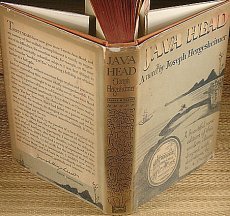
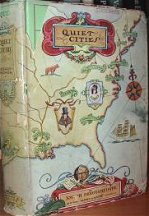
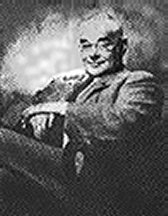 Joseph
Hergesheimer (1880-1954): author of The Lay Anthony, Mountain
Blood, The Three Black Pennys, Java Head, Linda Condon, Cytherea, The Bright
Shawl, Wild Oranges, The Dark Fleece, The Happy End, San Cristobal De La
Habana (Cuba), etc.
Joseph
Hergesheimer (1880-1954): author of The Lay Anthony, Mountain
Blood, The Three Black Pennys, Java Head, Linda Condon, Cytherea, The Bright
Shawl, Wild Oranges, The Dark Fleece, The Happy End, San Cristobal De La
Habana (Cuba), etc.
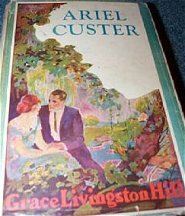
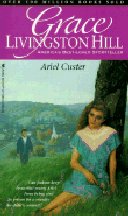
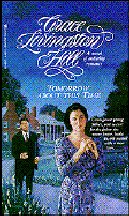
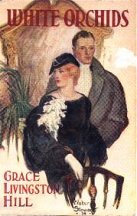
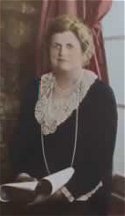
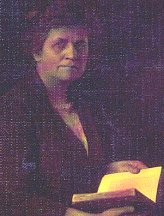 Grace
Livingston Hill: A Life Lived for Christ ~ She was born in Wellsville,
New York to a young Presbyterian minister and a published writer. It is
no wonder that Grace received such strong talents and strength in God from
her parents for they were the role models, along with her Savior Jesus
Christ, that shaped each and every decision in her life. Grace once said
that her father was the man to which she compared all other men. She was
very close to both her mother and father, but was also very close to her
Aunt Isabella, also a published writer more commonly known as Pansy. Along
with her mother, Pansy spawned the interest in writing and telling stories
at a very young age. On Grace's twelfth birthday, Pansy gave her a very
special gift. From one of the stories that Grace had recited to her, Pansy
took the initiative to type out the manuscript and send the story to her
publisher. Pansy presented Grace with a little hardback book. Her first
book had been printed by D. Lothrop Company, which was also one of Grace's
publishers later in life. During most of Grace's teenage years, she remained
close to her parents. Her father, being a minister, was called to different
areas of the eastern United States, and she would always help out with
her father and his congregation. Her father was called to Florida and while
they were there, Grace obtained a job at a local school as a gymnastics
instructor. It was not until Grace wanted to take a trip to Chautauqua
Lake in New York where her family had gathered together in the summer for
years. She desired to go so badly, but her family was not financially stable
enough at that time to take such an extravagant trip. Once Grace became
determined to go to Chautauqua, she became determined raise the funds to
make the trip possible. This was when Grace began writing her first book,
The Chautauqua Idyle, which was published by D. Lothrop Company and was
distributed at the conference in Chautauqua. Grace was also in attendance
at the conference, and she had achieved her goal. She now knew that she
was capable of something great. This was just the beginning of her long
and fulfilling writing career. She had began courting a couple of
men, but it was Fred Hill, a young minister much like her father, which
took Grace's heart. They married and had two daughters all while she continued
her writing career. She taught her daughters at home, and she always had
time for raising them in accordance with the Word of God. It wasn't until
her husband died that things changed for the worse. Grace was forced to
go out on her own and make a living for herself. It was at this time that
her writing became more than just a passion and hobby but a career for
financial purposes. Just when she thought that things could not get worse,
her father died as well. Grace's mother came to live with her, and was
very helpful in raising Grace's two daughters. Grace soon became strengthened
her God and with His Blessings, was able to go on with her life.
Grace later married Flavius Josephus Lutz who was the organist at her local
church. Grace thought that she might have a chance at normalcy for awhile,
but second marriage soon began to tragically dissolve. It took ten difficult
years before Grace finally asked the verbally abusive Flavius to leave.
Grace never divorced Flavius, but she did stop using his surname. After
the separation, much of the excitement in Grace's life began to settle.
Grace continued to write and remained a large part of her daughter's lives
and later also in her daughter's husband's lives. Grace would later say
that she was too much a part of their lives, but everything fell comfortably
into place. Grace went on to write over
Grace
Livingston Hill: A Life Lived for Christ ~ She was born in Wellsville,
New York to a young Presbyterian minister and a published writer. It is
no wonder that Grace received such strong talents and strength in God from
her parents for they were the role models, along with her Savior Jesus
Christ, that shaped each and every decision in her life. Grace once said
that her father was the man to which she compared all other men. She was
very close to both her mother and father, but was also very close to her
Aunt Isabella, also a published writer more commonly known as Pansy. Along
with her mother, Pansy spawned the interest in writing and telling stories
at a very young age. On Grace's twelfth birthday, Pansy gave her a very
special gift. From one of the stories that Grace had recited to her, Pansy
took the initiative to type out the manuscript and send the story to her
publisher. Pansy presented Grace with a little hardback book. Her first
book had been printed by D. Lothrop Company, which was also one of Grace's
publishers later in life. During most of Grace's teenage years, she remained
close to her parents. Her father, being a minister, was called to different
areas of the eastern United States, and she would always help out with
her father and his congregation. Her father was called to Florida and while
they were there, Grace obtained a job at a local school as a gymnastics
instructor. It was not until Grace wanted to take a trip to Chautauqua
Lake in New York where her family had gathered together in the summer for
years. She desired to go so badly, but her family was not financially stable
enough at that time to take such an extravagant trip. Once Grace became
determined to go to Chautauqua, she became determined raise the funds to
make the trip possible. This was when Grace began writing her first book,
The Chautauqua Idyle, which was published by D. Lothrop Company and was
distributed at the conference in Chautauqua. Grace was also in attendance
at the conference, and she had achieved her goal. She now knew that she
was capable of something great. This was just the beginning of her long
and fulfilling writing career. She had began courting a couple of
men, but it was Fred Hill, a young minister much like her father, which
took Grace's heart. They married and had two daughters all while she continued
her writing career. She taught her daughters at home, and she always had
time for raising them in accordance with the Word of God. It wasn't until
her husband died that things changed for the worse. Grace was forced to
go out on her own and make a living for herself. It was at this time that
her writing became more than just a passion and hobby but a career for
financial purposes. Just when she thought that things could not get worse,
her father died as well. Grace's mother came to live with her, and was
very helpful in raising Grace's two daughters. Grace soon became strengthened
her God and with His Blessings, was able to go on with her life.
Grace later married Flavius Josephus Lutz who was the organist at her local
church. Grace thought that she might have a chance at normalcy for awhile,
but second marriage soon began to tragically dissolve. It took ten difficult
years before Grace finally asked the verbally abusive Flavius to leave.
Grace never divorced Flavius, but she did stop using his surname. After
the separation, much of the excitement in Grace's life began to settle.
Grace continued to write and remained a large part of her daughter's lives
and later also in her daughter's husband's lives. Grace would later say
that she was too much a part of their lives, but everything fell comfortably
into place. Grace went on to write over 